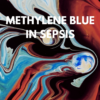Have you ever had one of those cases where you thought, “I am so good, picking that”, even if you didn’t say it out loud. Or have you ever had one of those diagnoses where you thought ” I am so lucky”, it didn’t go, all ordinary on me.
Well here is a recent case of mine that had a bit of both. The man with epigastric pain.
Now to start, I’ll put it in context. I have rules that I live by in the emergency department. Rules that I have developed over the years. (If I have time at the EMCORE and we are running early, I’ll take you through them). Two of them are:
-If you’ve had to give a patient with abdo pain a bucket-load of morphine and the patient says they’re OK and you’re not sure of the diagnosis, then the patient is probably not OK
-If you are treating a medical person something will go wrong- try and take a coffee break, when you see them come in.
Here is the case. It’s early evening and a fit and health 45 year old male with medical training is brought into the department by his (medically trained) wife- this is a double whammy! Red Flag, Red Flag, Red Flag! About 30 minutes prior, he developed excruciating cramping epigastric pain. He is in distress in the emergency department, with legs drawn up. The pain score is 10+ and he cannot be examined.
He has no past history, no allergies, and is not on any medication. He doesn’t drink or smoke and he looks lean and fit.
The pain began suddenly and was not improving.
In parallel, we obtained some vitals and also acquired intravenous access and sent off bloods for FBE,CRP(because he was a physician), EUC, LFT, Lipase. I was looking for the big stuff, infection, gall bladder, pancreatitis.
He was also given intravenous morphine and a bag of normal saline at slow drip, was put up. After about 10mg of morphine, I could examine him.
He had a soft abdomen, with no rebound or guarding, there was perhaps some minor RUQ tenderness, but most of the pain was in the epigastrium. The rest of the examination and systems review was normal. He was haemodynamically stable, not tachycardic and was to remain that way throughout my whole shift.
All the bloods were normal. For completeness, he also had an upright chest Xray, that showed a narrow mediastinum and no gas under the diaphragm. He also had an ECG that was normal, apart from some early repolarisation in the anterior leads.
He had a further 5 mg of morphine. He was also given some intravenous pantoprazole as the working diagnosis was a gastric ulcer, or similar.
He felt much better, the pain was now “about a 3 or maybe even a 2” and he wanted to go home. Great, I can empty a bed. This is the time to be careful! The analgesia given was 15mg of morphine, barely 1.5 hours in total, following his presentation. Welcome to the ‘danger zone’.
So I pulled out my “things sometimes declare themselves in the ED you know” and “it is good to observe and see what happens over a period of time”. It wasn’t going to happen. My concern; he had ticked 2 of the ‘be careful’ boxes I have and was now going to leave. Now, medico-legally, I can sign him out against medical advice and he can have something bad happen, but it’s not the right thing to do and he also works in my hospital.
So, with little else left in my armament, I pulled out the heavy artillery. “Look, I need to rule out one more thing; an atypical presentation of cardiac pain, (not in a million years was this going to be cardiac) and I need to do a…….. troponin……….Time bought.
It’s now the end of my shift and I hand over my thoughts and lack of definitive diagnosis. I ask the doctor to check the troponin, and look over the patient before she sends him home. The troponin comes back as negative and the doctor on, is happy and is going to discharge the patient. The patient goes to the bathroom, where he feels unwell and has a significant emesis, which, I was told looked pink(?blood) and then promptly collapses.
There was initial resuscitation and he was taken for an urgent gastroscopy which…………………………was normal.
He was then taken to CT. The verdict was…………. he had an internal hernia. Part of the small bowel had gone through the falciform ligament and was compromised. He was immediately taken to theatre, where the bowel was released and it pinked up. I looked in on him the next day, he looked well.
For me it reinforced my rules of engagement. Beware the severe abdo pain you cannot work out, especially the one that needs a lot of analgesia and beware the doctor-patient.
My rules live on!










